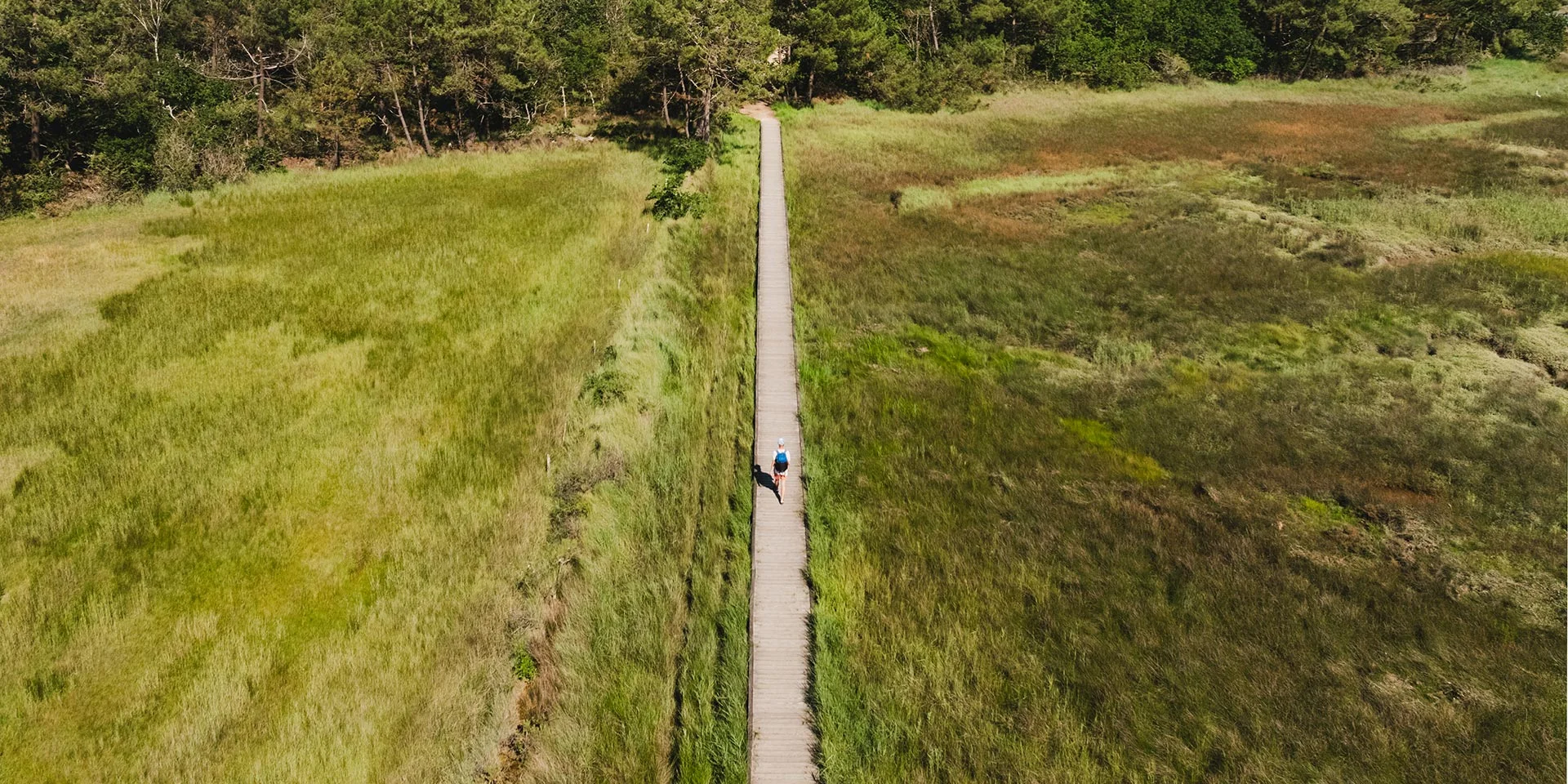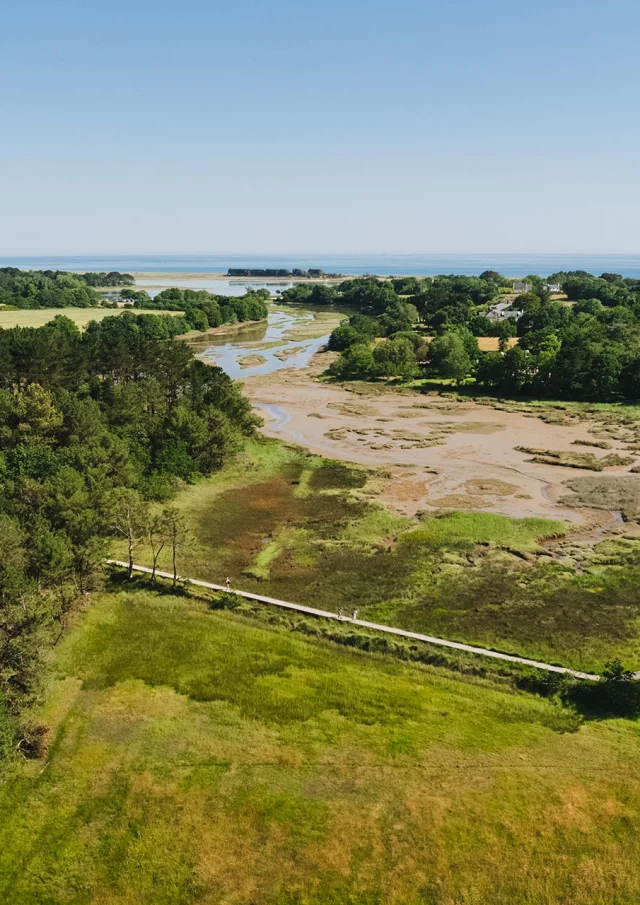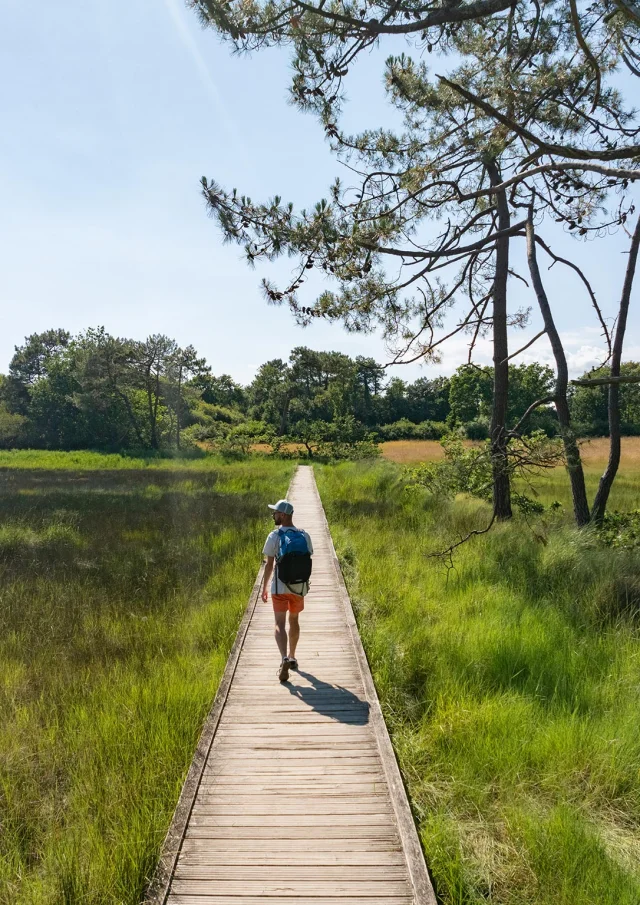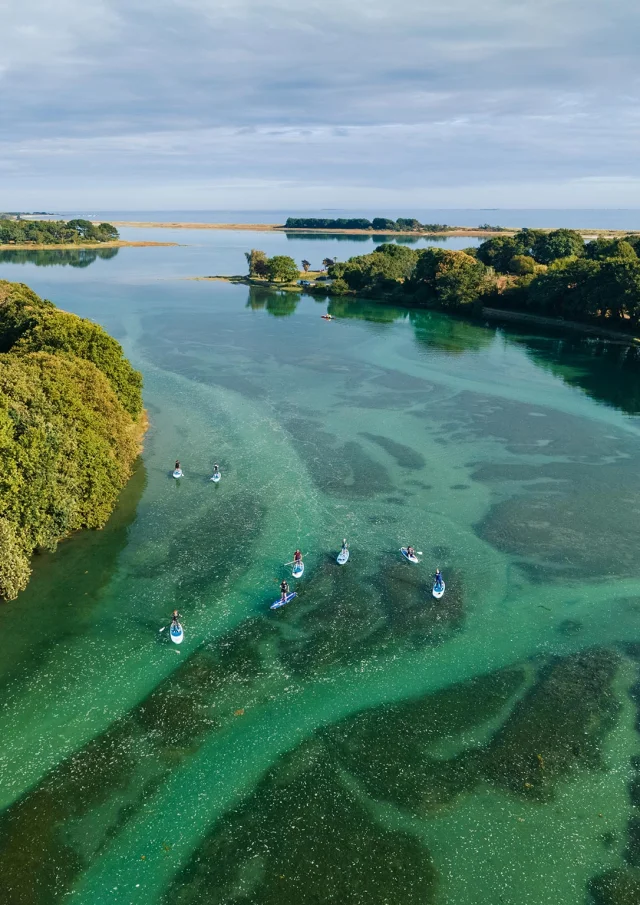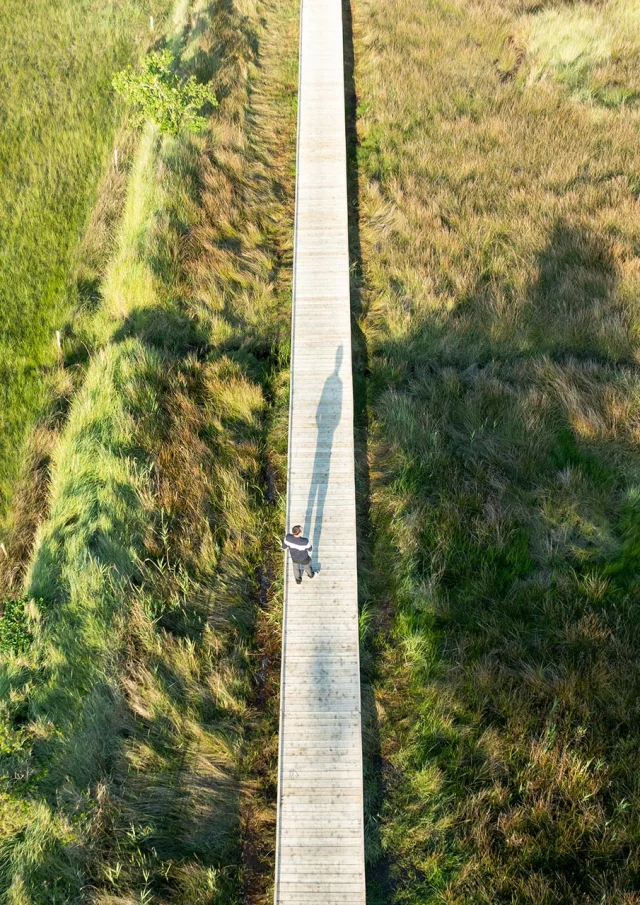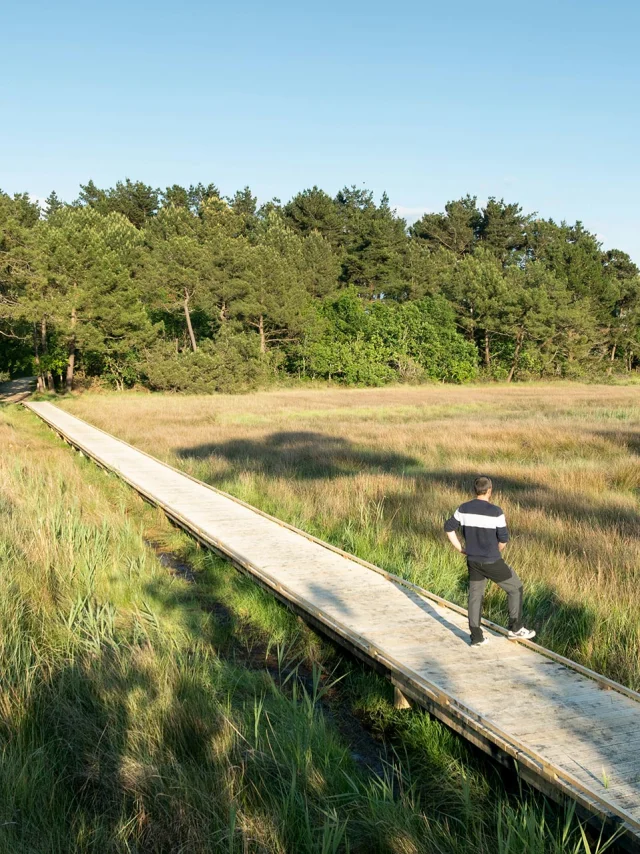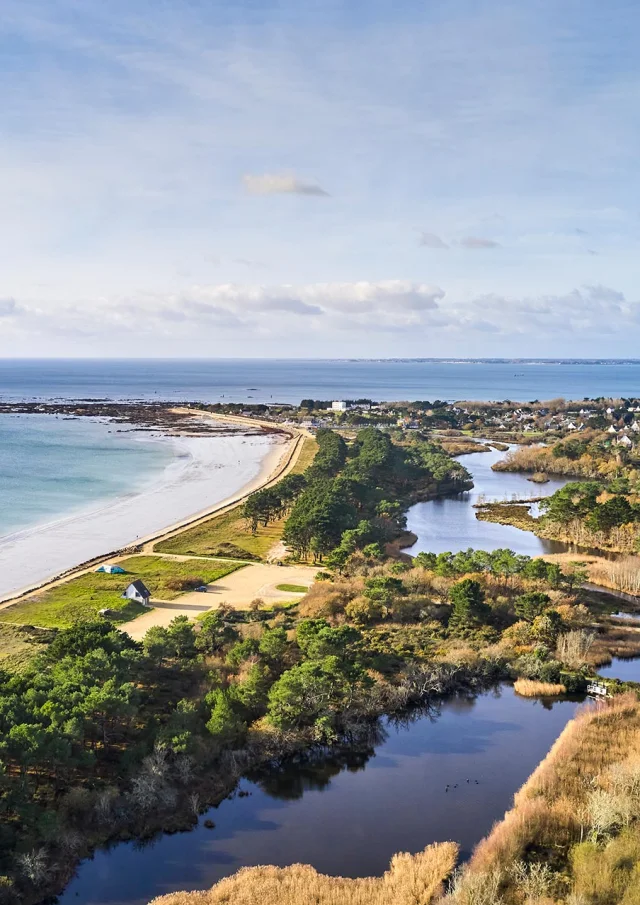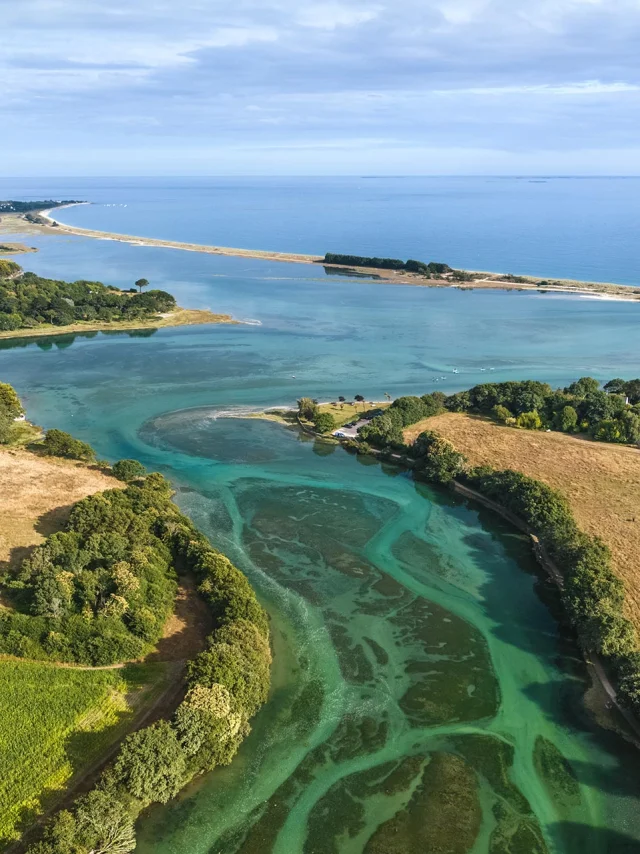 100 Lodet Benodet Aout 23 Hd
100 Lodet Benodet Aout 23 HdAn amazing story to discover with the whole family
In days gone by, the washerwomen used to meet up at the Kerguel wash-house – which can still be seen today! The cove has also seen several dyke projects to keep it away from the influence of the sea, but the salinity of the soil got the better of agricultural ambitions. In 1926, it was finally incorporated into the public maritime domain.
Incredible biodiversity, to be observed all year round
Anse du Petit Moulin is a haven for local flora and fauna. The diversity of natural environments – meadows, woods, mudflats, embankments, ponds – means that many species can make their long-term homes here.
- On the land side: Here you can come across the adder, a discreet and protected snake that is now threatened in Brittany. It hibernates from November to February and likes to warm up in the sun in spring. If you see it, admire it from afar! The woods are home to the green frog, the spotted woodpecker, the goldfinch and the rare peony bullfinch. The old oaks and maritime pines, rich in dead wood, are veritable insect hotels.
- On the sea side: At low tide, the mudflats are revealed: an essential habitat for many shorebirds such as the Whimbrel, recognisable by its long beak and “Couuu-hi” call. In the centre of the cove grows Spartina maritima, a pioneering plant that stabilises the mud and prepares the ground for species such as Glasswort, Soda and Obione.
